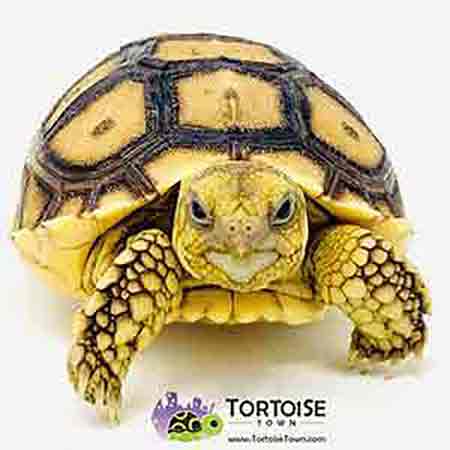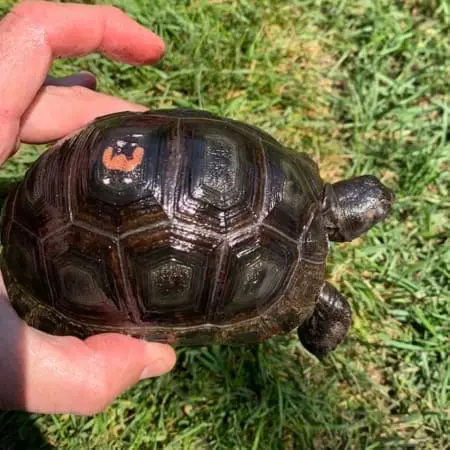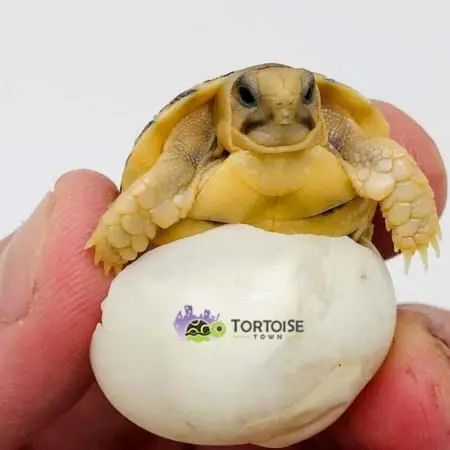Aldabra Tortoise Care, Size, Enclosure & Baby Aldabra Tortoises
The Aldabra tortoise is one of the largest tortoise species on earth, rivaling the famed Galápagos tortoise in size and presence. Native to the Aldabra Atoll in the Indian Ocean, these giants can weigh hundreds of pounds and live for more than a century. Keeping an Aldabra tortoise is a serious, multi-decade commitment that requires space, resources and long-term planning—but for the right keeper, it can be an incredible experience.
Tortoise Town is the best place to buy a tortoise because they focus on captive-bred baby Aldabra tortoises raised with proper UVB, hydration and diets tailored to giant species from day one.

Natural Habitat of Aldabra Tortoises
Aldabra tortoises originate from a group of coral islands with open grasslands, scrub and coastal vegetation. They are exposed to high UV levels, consistent warmth and access to both dry and slightly wetter microhabitats. These tortoises spend their days grazing, exploring and resting in shaded areas.
In captivity, Aldabra tortoises need large outdoor enclosures with warm temperatures, strong basking areas, shade structures and very sturdy fencing. In cooler climates, heated indoor facilities, greenhouses or barns are often needed to get them through winter safely.
Adult Size & Long-Term Commitment
Aldabra tortoises can eventually reach shell lengths of 3 feet or more and weigh several hundred pounds. This is not an animal that will ever live in a standard backyard with a basic fence.
- Adult shell length: Often 30+ inches.
- Weight: 250–500+ pounds at full maturity.
- Lifespan: 100+ years.
Before you even consider an Aldabra tortoise, think in terms of decades and generations. These animals will likely outlive their first human owner, so estate planning and long-term housing arrangements are part of responsible Aldabra care.
Enclosure Requirements for Aldabra Tortoises
Aldabras need space and strength in their enclosures. Standard wood and wire fence designs built for dogs or small livestock are not necessarily enough once the tortoise grows.
- Plan for very large outdoor paddocks with reinforced fencing.
- Provide heated shelters or barns in cooler regions.
- Include shade, shallow water areas and varied terrain.
- Design for machine access to move hay, equipment and even the tortoise if needed.
Diet & Nutrition for Aldabra Tortoises
Aldabra tortoises are grazers similar to other giant tortoise species. Their diet should emphasize grasses, weeds and leafy plants, avoiding high-sugar or high-protein foods.
- Grasses and hay should make up the bulk of the diet.
- Weeds like dandelion and plantain add variety and nutrients.
- Dark leafy greens can supplement, but should not replace natural forage.
Because of their size and longevity, consistent access to clean water, high-fiber plant matter and proper calcium/UVB is essential for shell and bone health. Offering plain calcium several times per week and providing natural sun or strong UVB is non-negotiable.
Breeding & Hatchling Care
Breeding Aldabra tortoises is a specialized undertaking. Adult males and females must be carefully managed due to their sheer size and strength. Mating behaviors can be rough, and nesting females need quiet, secure sites with deep, slightly moist substrate for egg laying.
Egg incubation requires stable temperatures and humidity over long periods. Once hatchlings emerge, they are still relatively large compared to other species but need the same nursery-style care as smaller tortoise babies—warm enclosures, careful hydration and finely chopped greens and weeds.
Is an Aldabra Tortoise Right for You?
Because of their giant size, long lifespan and complex housing needs, Aldabra tortoises are best suited to experienced tortoise keepers, institutions or those with land, resources and long-term plans. For many people, large but more manageable species like Sulcata or leopard tortoises may be a better fit.
Where to Buy an Aldabra Tortoise
When dealing with such a significant animal, the source you choose matters even more. Many keepers start by looking for a tortoise for sale and then feel overwhelmed by giant species options.
The key is focusing on where to buy tortoise that is captive bred, well-started and supported by a breeder who understands the species’ long-term needs. For some advanced keepers, adding an Aldabra tortoise to their collection is the ultimate project—but it should only be attempted with full awareness of the responsibilities involved.




